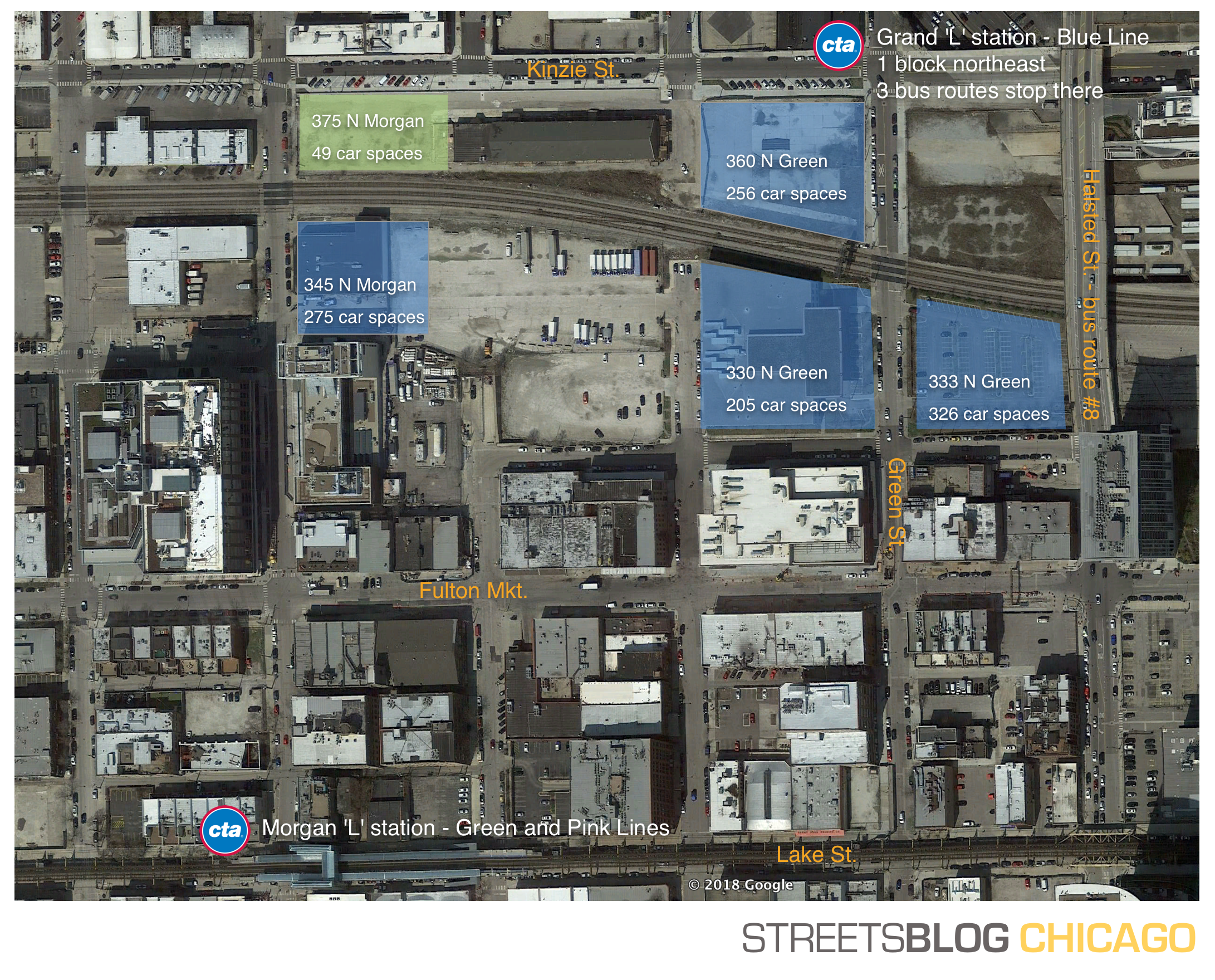Chicago desperately needs a parking maximum policy, which would help make our streets safer, reduce congestion and pollution, promote walkability, and address falling transit ridership. It might seem like a stretch to connect all those dots, but the glut of parking spaces that are currently being built in transit-friendly, walkable neighborhoods are only going to worsen contribute to our city's traffic jam and pollution problems.
Last month Shaun Jacobsen wrote about the plan to build over a thousnd car spaces next door to the Red Line's Chicago Avenue station, which has 24-hour service and multiple bus route connections, as part of the Holy Name Cathedral parking lot redevelopment. If that didn't already make it clear that we need to cap the amount of parking that developers can build, now there's another example of a "worst practice."
Sterling Bay, which is responsible for most of the new or rehabbed office space that has been created in the West Loop since the current boom began in 2012, is building 1,062 more car spots in that neighborhood. The spaces will be constructed in conjunction with three new office towers and a retail building with a movie theater in the Fulton Market area.
Those four lots, on Green and Morgan streets between Kinzie Street and Fulton Market, are within walking distance of two 'L' stations served by three train lines. The Grand Blue Line station has 24-hour service, and the Green and Pink lines serve the Morgan stop. High-frequency bus routes also run near the parcels on Grand Avenue and Halsted Street.
The Center for Neighborhood Technology ranks these lots a 9.8 out of 10 on their AllTransit Performance Score, which rate the level of transit access a location has for trips to workplaces, schools, and other destinations. This means that tons of people are already taking transit here, and the neighborhood offers lots of jobs that are accessible by trains and buses "enabling [a] significant number of people to take transit to work." There are 86 bus and 'L' stops within half a mile of these four vacant or underused lots.
Walk Score, which focuses on residential and living needs, gives these block a rating of about 96, or "walker's paradise," meaning that "daily errands do not require a car."
Locating an office and other commercial uses on these lots is a very good idea, according to AllTransit. There are potentially 510,616 customers living within a 30 minute transit ride of this location, and potentially 550,179 people who could work in this location and only spend 30 minutes or less on a transit commute here.
Right now there are 6,579 jobs in the same Census block group as the lots, and 100 percent of them have good access to transit. Currently, though, only 16 percent of these employees take transit to work here, but another 25 percent walk.
The construction of a group of offices with 1,062 car parking spaces means that the area will see hundreds more car trips every day. But neighbors argue that congestion is already a major problem in the West Loop during rush hours, with drivers traveling at sub-walking speeds at some locations.
So why build all this new parking? Given the lots' proximity to the Morgan station, not a single car spot is required.
The good news is that even though Chicago doesn't a parking maximum policy, the Chicago Plan Commission can still improve this ill-conceived proposal. On Thursday, February 15, the plan commission will hear the three proposals, and the public is allowed to attend. You can also contact 27th Ward alder. Walter Burnett to let him know you're opposed to bringing hundreds of additional cars to the neighborhood.
A fourth office building has been proposed by Latsko Interests at 375 N Morgan St (marked in green on the map.) It would be a ten-story building with only 49 car parking spaces -- much more appropriate for this transit-rich location.






